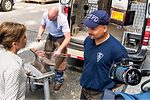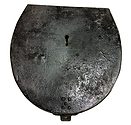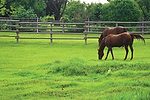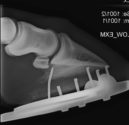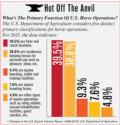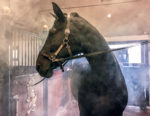Advertise Follow Us
American Farriers Journal

View Archived Issues
December 2017
Volume: 43
Edition: 8
American Farriers Journal is the “hands-on” magazine for professional farriers, equine veterinarians and horse care product and service buyers.
-
Table Of Contents
Table Of Contents
What's This? WWI Field Forge
Take a Journey Back in Time as We Explore a Shoeing Tool from the PastRead MoreHow The Hoof Reveals Stress
While horses’ hooves undergo a lot of stress, appropriate farriery and a return to the functional foot model can help deal with signs of stressRead MoreShoeing for a LivingKeeping it Simple
North Carolina farrier Sean Gaul believes that a conservative approach that relies on the basics is the best way to help horsesRead MoreHow Radiographs And Joint Angles Can Guide Trimming And Shoeing
Approach avoids “dangerous” reliance on symmetry and sole landmarksRead MoreAre You Punching Better Nail Holes?
Veteran farriers share techniques to avoid sheared nails and preserve toolsRead MoreBringing the Hoof to Scientific Research
AFA Research Committee offers tips to make literature easier to understandRead MoreConsiderations for Using Alternative Materials for Managing Leverage
The thought process for addressing leverage concerns with modern materials requires gathering information and not limiting imaginationRead MoreWhat Causes Club Feet?
Hall Of Fame farrier Doug Butler examines why flexure limb deformities develop and how to prevent and manage themRead MoreDig Deeper When Tackling Inflammation
Examining the hoof, diet, gut health and stress can bring clarityRead MoreLearn How to Forge a “Hall of Fame” Heel
California farrier John Williams offers tips and insights for creating the clean and versatile Bob Marshall-style heel checkRead MoreHelping The Farrier Through Radiographs And MRI
Equine veterinarians survey how these advanced imaging methods can contribute to helping the farrier develop a footcare solutionRead MoreShoeing School Challenges Law Restricting Admissions
Pacific Coast Horseshoeing School alleges California law violates ConstitutionRead MoreWhat It Takes To Reach 125
At the end of its 125th anniversary year, W.F. Young credits honoring tradition while remaining innovative as it looks toward the futureRead MoreEnter The Summit Mail-In Forging Exercise
Build this shoe for a FREE T-shirt and your chance to win a belt buckleRead MoreResearch Journal: December 2017
The information, ideas and opinions expressed are those of the author and do not necessarily represent those of the United States Department of Agriculture.Read More -
Featured Articles
Featured Articles
How The Hoof Reveals Stress
While horses’ hooves undergo a lot of stress, appropriate farriery and a return to the functional foot model can help deal with signs of stressRead MoreWhat Causes Club Feet?
Hall Of Fame farrier Doug Butler examines why flexure limb deformities develop and how to prevent and manage themRead MoreHelping The Farrier Through Radiographs And MRI
Equine veterinarians survey how these advanced imaging methods can contribute to helping the farrier develop a footcare solutionRead More - Digital Edition
-
Online Extras
Online Extras

